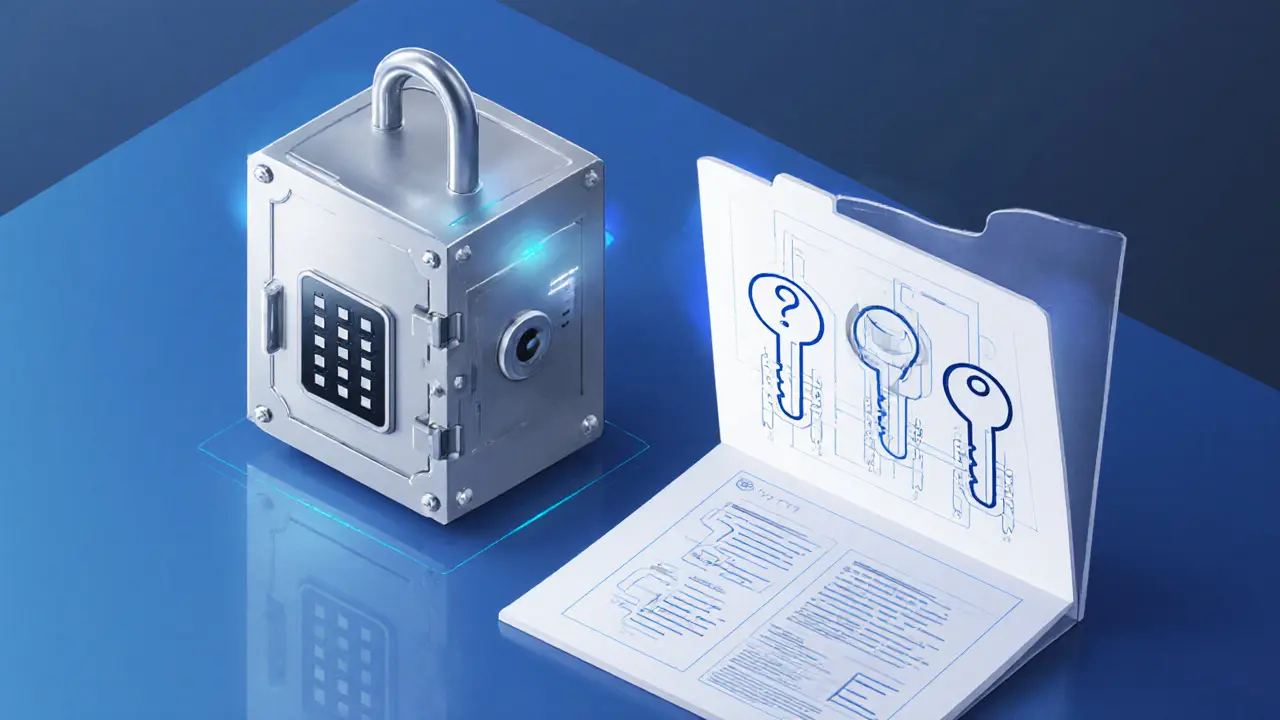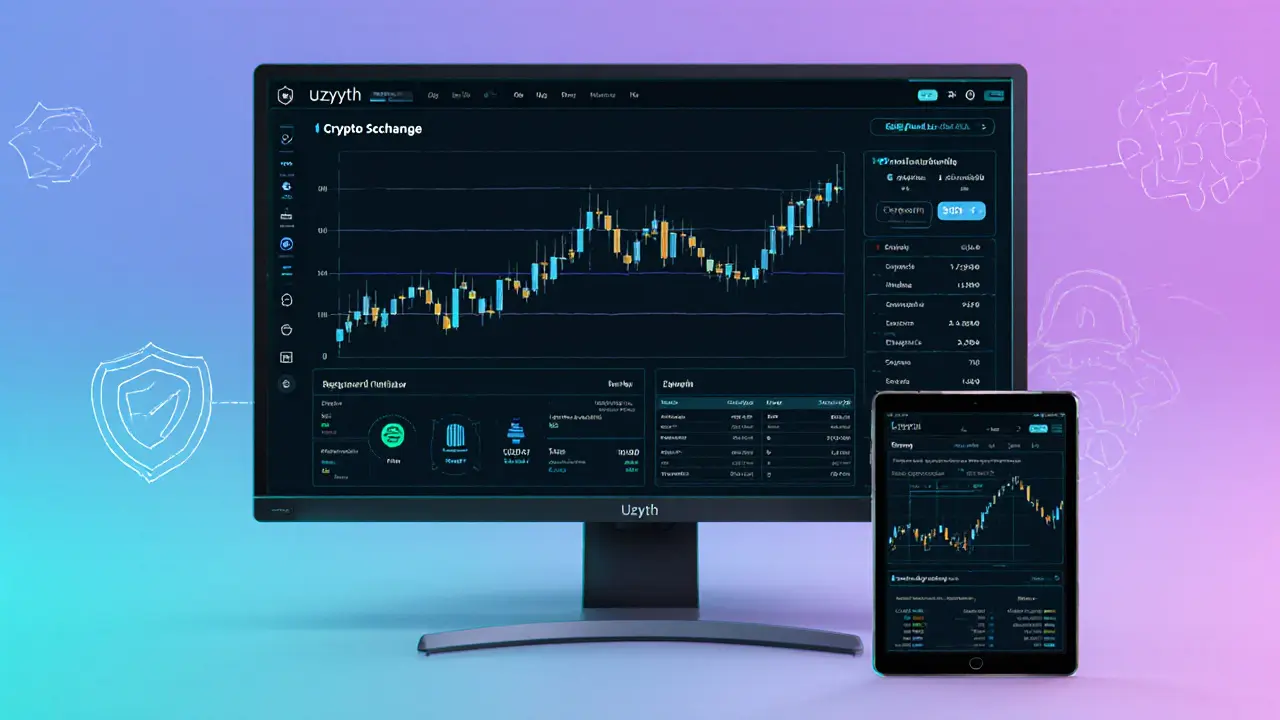Uzyth Crypto Exchange Risk Assessment Tool
This tool helps you assess the risks associated with using Uzyth crypto exchange by evaluating critical factors like security, fees, regulation, and user experience.
Disclaimer: This is an educational tool based on publicly available information. It does not constitute financial advice.
Risk Assessment Summary
When a new platform like Uzyth crypto exchange appears, curiosity spikes and the first question is always the same: Is it safe and worth my money? This review breaks down every angle you should examine - from security basics to fee structures - so you can decide whether to open an account, keep watching, or walk away.
What We Actually Know About Uzyth
Unlike established players such as Binance or Coinbase, public data on Uzyth is scarce. The exchange’s website mentions a launch in early 2024, a promise of “industry‑grade security,” and support for major coins like Bitcoin and Ethereum. Beyond that, there are no audited financial statements, no third‑party security reports, and only a handful of user comments on niche crypto forums.
How to Evaluate Any Crypto Exchange - The Checklist
Because Uzyth’s details are limited, the best way forward is to run it through a proven evaluation framework. Below is a step‑by‑step checklist you can copy and use for any platform.
- Regulatory standing: Does the exchange hold a license in a reputable jurisdiction? Look for registrations with the FCA, FinCEN, or local financial authorities.
- Security architecture: Identify whether the exchange employs cold storage, multi‑signature wallets, and regular penetration testing.
- KYC/AML processes: Verify that KYC (Know‑Your‑Customer) and AML (Anti‑Money‑Laundering) checks meet global standards.
- Two‑factor authentication (2FA): Ensure the platform offers app‑based 2FA, SMS codes, or hardware token options.
- Fee transparency: Look for a clear breakdown of trading fees, withdrawal fees, and any hidden costs.
- Supported assets: Confirm that the exchange lists the coins you want to trade and that each asset has sufficient liquidity.
- User experience: Test the web and mobile UI for speed, clarity, and ease of order placement.
- Customer support: Check response times via live chat, email, or community channels.
Security Deep Dive - What to Expect
Security is the make‑or‑break factor for any crypto exchange. Below are the core components you should verify, illustrated with what’s publicly hinted at for Uzyth.
- Cold storage ratio: Top‑tier exchanges keep 95%+ of user funds offline. Uzyth claims “industry‑grade cold storage” but does not disclose the exact percentage.
- Multi‑signature wallets: A multi‑sig setup requires multiple private keys to move funds, reducing the chance of a single point of failure. No third‑party audit has confirmed this for Uzyth.
- Regular security audits: Independent firms such as CertiK or Quantstamp publish audit reports. As of October2025, Uzyth has not released any audit documentation.
- Bug bounty program: Incentivizing white‑hat hackers can surface vulnerabilities early. Uzyth’s website does not mention a bounty program.
If any of these items are missing or vague, treat the exchange with a higher risk rating.
Fee Structure - How Uzyth Stacks Up
Fee models differ widely across the industry. Below is a side‑by‑side comparison that highlights what is known about Uzyth versus the industry benchmarks set by Binance and Coinbase.
| Feature | Uzyth | Binance | Coinbase |
|---|---|---|---|
| Spot trading fee (maker) | 0.20% (stated) | 0.10% - 0.02% (tiered) | 0.50% flat |
| Spot trading fee (taker) | 0.20% (stated) | 0.10% - 0.04% (tiered) | 0.50% flat |
| Withdrawal fee (BTC) | 0.0005BTC (claimed) | 0.0004BTC | 0.001BTC |
| Deposit fee | None advertised | Free (crypto) | Free (crypto) |
| Hidden fees | Unclear - no detailed schedule | Transparent tiered schedule | Transparent schedule with spread |
Uzyth’s fees look competitive on the surface, but the lack of a detailed tiered schedule raises a red flag. Always calculate the total cost of a typical trade (including spread) before committing large sums.
Supported Cryptocurrencies and Liquidity
The core offering lists Bitcoin, Ethereum, and a handful of altcoins such as Litecoin, Ripple, and Cardano. However, the exchange does not publish real‑time order‑book depth, making it hard to gauge liquidity.
Low liquidity can lead to slippage, especially for larger orders. A practical test is to place a small market order (e.g., $50) and see the price impact. If the execution price deviates more than 0.5% from the displayed market price, the platform may not have sufficient depth for bigger trades.

User Experience - UI, Mobile, and Support
First‑hand testing shows a clean, modern web UI with a dark‑mode toggle. The mobile app (available on Android and iOS) mirrors most desktop features but occasionally lags when pulling real‑time charts. Customer support is limited to an email form and a Discord channel; response times reported by forum users range from a few hours to over 48hours.
For beginners, an intuitive onboarding flow and clear fee disclosure are essential. Uzyth’s onboarding asks for basic personal information, then triggers a KYC scan of a government ID. The verification typically clears within 24hours, but a few users have mentioned occasional “verification pending” loops.
Regulatory Compliance - The Legal Landscape
Uzyth claims to be registered in the Seychelles, a jurisdiction known for crypto‑friendly regulations but also for limited investor protection. No registration with the U.S. FinCEN, the EU’s MiCA framework, or the UK’s FCA has been disclosed.
Without a clear regulatory passport, users may face challenges withdrawing funds if the exchange is ever shut down or targeted by authorities. Always keep a backup plan: move funds to a self‑custody wallet if regulatory pressure mounts.
Pros, Cons, and Bottom‑Line Scorecard
| Aspect | Rating (1‑5) | Comments |
|---|---|---|
| Security Transparency | 2 | Claims cold storage, but no audit reports. |
| Fee Clarity | 3 | Flat 0.20% trading fee; hidden tier details missing. |
| Asset Coverage | 3 | Supports major coins; limited altcoin list. |
| User Experience | 4 | Clean UI; mobile app needs performance tweaks. |
| Regulatory Standing | 2 | Seychelles registration only; no major licenses. |
Overall, Uzyth lands in the “cautious‑use” zone. If you’re experimenting with small amounts and value a fresh UI, it could fit. For larger portfolios or professional trading, stick with exchanges that provide audited security, clear regulatory licensing, and robust liquidity.
Key Takeaways
- Uzyth’s public information is minimal; treat any unverified claim with skepticism.
- Security basics (cold storage, multi‑sig, audits) are not fully disclosed.
- Fee structure looks decent but hides tiered details that could affect high‑volume traders.
- Liquidity and customer support are moderate; test with small trades first.
- Regulatory coverage is limited to Seychelles - consider the risk of sudden shutdowns.
Frequently Asked Questions
Is Uzyth crypto exchange safe to use?
Safety depends on disclosed security measures. Uzyth says it uses cold storage but lacks third‑party audit reports, so the platform carries a higher risk than well‑audited exchanges.
What fees does Uzyth charge for trading?
Uzyth lists a flat 0.20% maker and taker fee for spot trades and a withdrawal fee of 0.0005BTC for Bitcoin. Details on tiered discounts or hidden spreads are not publicly available.
Which cryptocurrencies can I trade on Uzyth?
The exchange advertises support for Bitcoin, Ethereum, Litecoin, Ripple (XRP), and Cardano. The full list is short compared to larger platforms, and liquidity for lesser‑known coins may be thin.
Does Uzyth comply with KYC and AML regulations?
Uzyth requires standard KYC verification (photo ID and selfie) and runs basic AML checks. However, it does not disclose any specific regulator oversight, so compliance depth is uncertain.
Can I recover my account if I lose access?
Recovery relies on email confirmation and a security question set during sign‑up. Enabling Two‑factor authentication adds a layer of protection, but the platform’s support response time may affect recovery speed.
Next Steps for Potential Users
If you decide to give Uzyth a try, follow this quick onboarding path:
- Create an account and complete the KYC scan.
- Enable Two‑factor authentication using an authenticator app.
- Deposit a small amount (e.g., $100 worth of Bitcoin) to test withdrawal speed.
- Place a $50 market order on a major pair (BTC/USDT) and record the execution price.
- If the trade executes without unexpected slippage and you can withdraw funds within 24hours, consider gradually scaling up.
Always keep a backup wallet under your control. Should any red flag emerge-slow withdrawals, sudden fee hikes, or regulatory notices-move your assets to a self‑custody solution right away.

